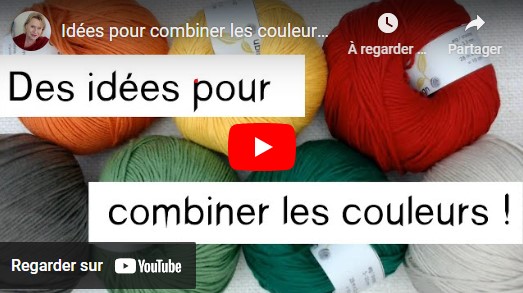Bambou dentelle gris argent et bleu navy
Deux coloris superbes de bambou dentelle sont de nouveau disponibles dans la boutique ! Le gris argent, que beaucoup parmi vous pensent être le plus joli coloris de ce fil, ainsi que … … le bleu navy, pour tous les amateurs de bleu. Sur ce type de coloris sombre, la brillance du bambou apporte un […]
Nouveaux coloris bambou dentelle !
Pour vos châles de printemps/été, cinq nouveaux coloris de bambou dentelle ! Ficelle, le complément ton sur ton du coloris sable. Rose indien, un rose très vif qui réveillera vos tenues de printemps. Violette, la couleur de la fleur, un coloris original et flatteur. Turquoise, tout en douceur, pour aller nager avec les dauphins. Et […]
Kit Prendre racine en mérinos fin et bambou dentelle
Je vous ai parlé de la belle rencontre entre le mérinos fin et le bambou dentelle… Les voici unis dans le superbe modèle d’Alana Dakos, Prendre racine ! Je vous propose le kit en quatre coloris. La pureté du coloris crème pour un béret assorti à la neige de l’hiver : La subtilité d’un gris […]
Quand le mérinos rencontre le bambou
La vie est parfois trop solitaire et trop routinière. On reste chez soi, on n’emprunte que des chemins connus, on ne va pas à la rencontre des autres. C’est vrai pour les humains, mais c’est parfois vrai aussi pour les fils de mon stock. Classés par qualité, chacun dans sa boîte, les couleurs se mélangent, […]
Kit Sea and Sun
On prépare l’été en crochetant Sea and Sun, le joli châle bicolore créé par EclatDuSoleil en bambou dentelle ! Les coloris d’origine ne sont pas disponibles actuellement (je manque notamment de maïs), mais je vous propose trois combinaisons de couleurs pour réaliser ce petit châle : Un camaïeu de bleus tout doux, avec le bleu […]
Bambou dentelle coloris paprika – Laceweight bamboo, chilli colour
Juste un petit mot pour vous dire que j’ai actuellement une petite quantité de bambou dentelle dans le joli coloris paprika dans la boutique. Profitez-en ! Just a note to let you know that I currently have a small quantity of laceweight bamboo in the lovely chilli colour in the shop. Enjoy ! Note to […]
Newsletter March 2016 – C2C: shapes and variations
In the shop This month, the news is about yarns and hooks! The laceweight bamboo is now available in the colour sand, soft to the touch and to the eye, with a lovely shine that makes you almost want to eat it! (It also makes me think of a light toffee). I have also added […]
Châles en bambou dentelle / Laceweight bamboo shawls
En ajoutant le nouveau coloris sable à la gamme du bambou dentelle, j’ai pensé à tout ce qu’on peut faire avec … Tous les modèles tricotés ou crochetés en fil dentelle conviennent bien sûr, mais il y a quelques châles qui ont été conçus spécialement pour ce fil : When adding the new sable colour […]
Bambou dentelle : sable / Bamboo laceweight : sand
Un nouveau coloris de bambou dentelle est disponible dans la boutique : sable. La brillance du bambou fait particulièrement bien ressortir ce coloris doux qui me fait aussi penser à un caramel très léger. A new colour of laceweight bamboo is available in the shop: sand. The soft shine of the bamboo fibre underlines this […]

